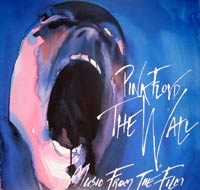PINK FLOYD - Animals 12" LP

1977
"Animals" is the tenth studio album by Pink Floyd, and was released in January 1977. A concept album, it provides a scathing critique of the social-political conditions of 1970s Britain, and presents a marked change in musical style from their earlier work.
Show Index PagePINK FLOYD - Atom Heart Mother 12" LP
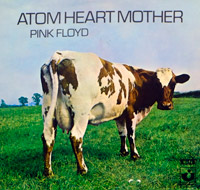
1970
"Atom Heart Mother" is the fifth studio album by Pink Floyd, released in 1970 by Harvest and EMI Records in the United Kingdom and Harvest and Capitol in the United States. It was recorded at Abbey Road Studios, London, England, and reached number one in the United Kingdom, and number 55] in the United States charts, and went gold in the U.S. in March 1994.
Show Index PagePINK FLOYD - Collection of Great Dance Songs 12" LP
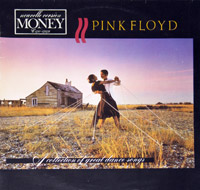
1981
"A Collection of Great Dance Songs" is a compilation album by Pink Floyd released on 23 November 1981 on Harvest/EMI in the UK and Columbia Records in the United States.
Show Index PagePINK FLOYD - Dark Side of the Moon 12" LP

1973
"The Dark Side of the Moon" is the eighth studio album by Pink Floyd, released in March 1973. The concept album built on ideas explored by the band in their live shows and earlier recordings, but it lacks the extended instrumental excursions that characterised their work following the departure in 1968 of founding member, principal composer and lyricist Syd Barrett.
Show Index PagePINK FLOYD - Delicate Sound of Thunder 12" LP
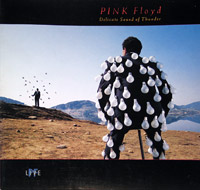
1988
"Delicate Sound of Thunder" is a Pink Floyd live double album from the David Gilmour-led era of the band which was recorded over five nights at the Nassau Coliseum on Long Island, New York in August 1988 and mixed at Abbey Road Studios in September 1988.
Show Index PagePINK FLOYD - Echoes the Best of Pink Floyd 12" LP
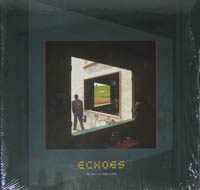
2001
"Echoes: The Best of Pink Floyd" is a compilation album by Pink Floyd. It was released by EMI Records on 5 November 2001, in the United Kingdom and the following day in the United States through Capitol Records.
Show Index PagePINK FLOYD - Final Cut 12" LP
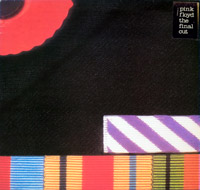
1983
"The Final Cut" is the twelfth studio album by Pink Floyd. A concept album, The Final Cut is the last of the band's releases to include founding member and longtime lyricist Roger Waters.
Show Index PagePINK FLOYD - Masters of Rock (Vol 1) 12" LP
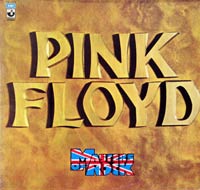
1974
This compilation album of Pink Floyd contains the hard to find tracks
Show Index PagePINK FLOYD - Meddle 12" LP
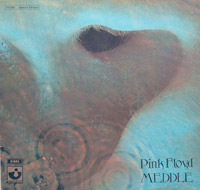
1971
Meddle is the sixth studio album by Pink Floyd. It was released in October 1971. This album was recorded at Morgan Sound Stusdios, London
Show Index PagePINK FLOYD - Momentary Lapse of Reason 12" LP

1987
"A Momentary Lapse of Reason" is the thirteenth studio album by Pink Floyd. It was released in the UK and US in September 1987. In 1985 guitarist David Gilmour began to assemble a group of musicians to work on his third solo album.
Show Index PagePINK FLOYD - More, the original motion picture soundtrack 12" LP
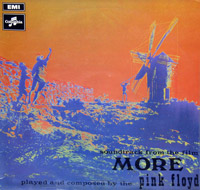
1969
Pink Floyd's More movie soundtrack is a classic album that remains highly influential to this day. The album's unique blend of progressive rock, psychedelic, and experimental elements helped to establish Pink Floyd as one of the most important bands of the 20th century.
Show Index PagePINK FLOYD - Nice Pair 12" LP
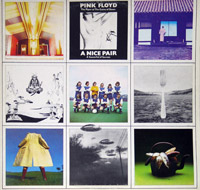
1973
The "Nice Pair" was released in December 1973 by Harvest and Capitol in the United States and the following month in the United Kingdom by Harvest and EMI.
Show Index PagePINK FLOYD - Obscured by Clouds 12" LP
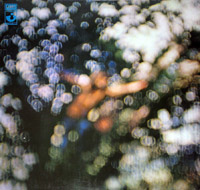
1972
"Obscured by Clouds" is the seventh studio album by Pink Floyd, based on their soundtrack for the French film "La Vallée", by Barbet Schroeder.
Show Index PagePINK FLOYD - The Piper at the Gates of Dawn 12" LP
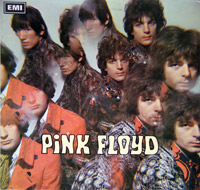
1967
"The Piper at the Gates of Dawn" is the firs album by the Pink Floyd, and the only one made under founding member Syd Barrett's leadership. The album contains whimsical lyrics about space, scarecrows, gnomes, bicycles and fairy tales, along with psychedelic instrumental songs.
Show Index PagePINK FLOYD - Relics 12" LP
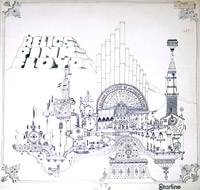
1978
Relics is a compilation album by Pink Floyd released in 1971. The album was released on 14 May in the UK and 15 July in the United States.
Show Index PagePINK FLOYD - Saucerful of Secrets 12" LP

1968
"A Saucerful of Secrets" is the second studio album by Pink Floyd. It was recorded at EMI's Abbey Road Studios on various dates from August 1967 to April 1968. It is both the last Pink Floyd album on which Syd Barrett would appear and the only studio album in which all 5 band members contributed.
Show Index PagePINK FLOYD - Tonite lets all make love in London 12" LP
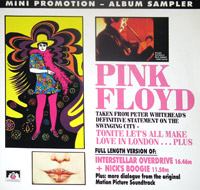
1990
Early Live recordings, complemented with interviews
Show Index PagePINK FLOYD - Ummagumma 12" LP
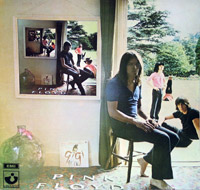
1969
Ummagumma is a double album by Pink Floyd, released in 1969 by Harvest and EMI in the United Kingdom and Harvest and Capitol in the United States. Disc A is a live album of their normal set list of the time, while disc B contains compositions by each member of the band recorded as a studio album.
Show Index PagePINK FLOYD - Wall, The 12" LP
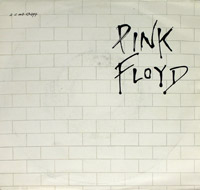
1979
The Wall is the eleventh studio album by Pink Floyd. Released as a double album on 30 November 1979, it was subsequently performed live with elaborate theatrical effects, and adapted into a feature film, Pink Floyd The Wall.
Show Index PagePINK FLOYD - Wish You Were Here 12" LP

1975
"Wish You Were Here" is the ninth studio album by English progressive rock group Pink Floyd, released in September 1975. Inspired by material they composed while performing across Europe, it was recorded over numerous sessions at London's Abbey Road Studios.
Show Index PagePINK FLOYD - 97 Vinyl Collection Audiophile 8LP Box-Set
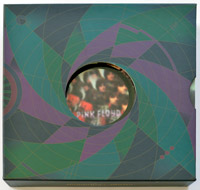
EMI , 1997 , United Kingdom
This is a box-set of 7 albums with in total 8LP. Each album is issued in a ( FOC ) Fold Open Coveraka Gatefold cover.
Show Index PagePINK FLOYD - Collection 12LP Box-Set
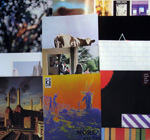
This Pink Floyd box-set includes 10 Pink Floyd albums with in total 13LP's as well as a large poster.
Show Index PageDavid Gilmour Solo Projects
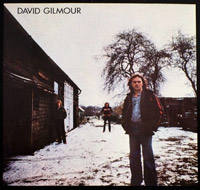
Here you will find several European releases of David Gilmour's debut solo album.
Show Index PageRoger Waters Solo Projects
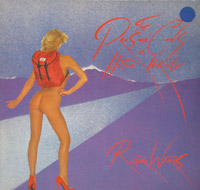
Here you will find several European releases of Roger Waters solo albums.
Show Index Page